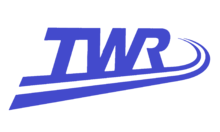Rinkai line
| Rinkai line | |||||||||||||||||||||||||||||||||||||||||||||||||||||||||||||||||||||||||||||||||||||||||||||||||||||||||||||||||||||
|---|---|---|---|---|---|---|---|---|---|---|---|---|---|---|---|---|---|---|---|---|---|---|---|---|---|---|---|---|---|---|---|---|---|---|---|---|---|---|---|---|---|---|---|---|---|---|---|---|---|---|---|---|---|---|---|---|---|---|---|---|---|---|---|---|---|---|---|---|---|---|---|---|---|---|---|---|---|---|---|---|---|---|---|---|---|---|---|---|---|---|---|---|---|---|---|---|---|---|---|---|---|---|---|---|---|---|---|---|---|---|---|---|---|---|---|---|---|
|
TWR series 70-000 in Ōsaki station
| |||||||||||||||||||||||||||||||||||||||||||||||||||||||||||||||||||||||||||||||||||||||||||||||||||||||||||||||||||||
| Route length: | 12.2 km | ||||||||||||||||||||||||||||||||||||||||||||||||||||||||||||||||||||||||||||||||||||||||||||||||||||||||||||||||||||
| Gauge : | 1067 mm ( cape track ) | ||||||||||||||||||||||||||||||||||||||||||||||||||||||||||||||||||||||||||||||||||||||||||||||||||||||||||||||||||||
| Power system : | 1500 V = | ||||||||||||||||||||||||||||||||||||||||||||||||||||||||||||||||||||||||||||||||||||||||||||||||||||||||||||||||||||
| Top speed: | 100 km / h | ||||||||||||||||||||||||||||||||||||||||||||||||||||||||||||||||||||||||||||||||||||||||||||||||||||||||||||||||||||
|
|||||||||||||||||||||||||||||||||||||||||||||||||||||||||||||||||||||||||||||||||||||||||||||||||||||||||||||||||||||
The Rinkai Line ( Japanese り ん か い 線 , Rinkai-sen , dt. "Coastline") is a railway line in the Japanese capital Tokyo , which connects the Shinagawa district with the Kōtō district. It is the only line operated by the company Tōkyō Rinkai Kōsoku Tetsudō KK ( 東京 臨海 高速 鉄 道 株式会社 , English Tokyo Waterfront Area Rapid Transit Inc. ). It is also used by trains of the East Japan Railway Company (JR East), which run on the Saikyō line to Shinjuku , Ikebukuro , Ōmiya and Kawagoe .
description
The route is 12.2 km long and has the usual Japanese gauge of 1067 mm ( Cape gauge ). Over a length of around 10 km, it runs in a tunnel, in the rest of the area raised or in a cut so that it is completely free of height . The artificial islands of Aomi and Odaiba in Tokyo Bay and the coastal area of the Shinagawa district (northwestern part of the Tokyo port ) are being developed. The platforms in five of the eight served train stations are underground. South of Shinagawa Seaside Station, the tunnel reaches a depth of 40 meters.
history
The Tokyo Prefecture's administration strove in the 1980s to develop the port area into a new sub-center ( Tōkyō Rinkai Fukutoshin , "Tokyo Coast Sub-Center") through land reclamation in order to counteract the increasing concentration of jobs in the city center. It soon became clear that a full-fledged railway line would be necessary to meet the increasing transport needs. A section of the Keiyō freight railway west of Shin-Kiba, which was closed in 1983 by the Japanese State Railways (JNR) , offered itself for this purpose . This should originally have led from Kawasaki to Kisarazu , but the declining freight traffic had forced the JNR to abandon the project.
Construction work began in 1992. The first section between Shin-Kiba and Tokyo Teleport opened on March 30, 1996. At the beginning the line was called Rinkai-Fukutoshin-Line ( 臨海 副 都 心 線 , Rinkai-fukutoshin-sen ). It received its current name on September 1, 2000. The opening of the second section between Tokyo Teleport and Tennōzu Isle took place on March 31, 2001. With the commissioning of the third section to Ōsaki on December 1, 2002, the Rinkai line was completed. The cost of the project was originally estimated at 290 billion yen , but ended up being 440 billion yen. In 2005 an average of 140,000 passengers were counted every day. Since then, the Rinkai line has had a steadily increasing number of users. In the 2014 fiscal year it counted 240,300 passengers a day.
Train stations
| Surname | Connecting lines | Coordinates | district | photo |
|---|---|---|---|---|
| Ōsaki ( 大 崎 ) | Saikyō Line , Yamanote Line , Shōnan-Shinjuku Line | 35 ° 37 '10.9 " N , 139 ° 43' 42.8" E | Shinagawa |

|
| Ōimachi ( 大 井 町 ) | Keihin Tōhoku Line , Ōimachi Line | 35 ° 36 '26.7 " N , 139 ° 44' 4.5" E |

|
|
| Shinagawa Seaside ( 品 川 シ ー サ イ ド ) |
35 ° 36 '34.9 " N , 139 ° 44' 58.9" E |

|
||
| Tennōzu Isle ( 天王 洲 ア イ ル ) |
Tōkyō monorail | 35 ° 37 ′ 13.9 ″ N , 139 ° 45 ′ 3 ″ E |

|
|
| Tōkyō Teleport ( 東京 テ レ ポ ー ト ) |
Yurikamome (stations Odaiba-Kaihinkōe and Aomi) | 35 ° 37 '39 " N , 139 ° 46" 43.7 " E | Kōtō |

|
| Kokusai-Tenjijō ( 国際 展示 場 ) |
Yurikamome (Ariake Station) | 35 ° 38 '4.1 " N , 139 ° 47' 30.5" E |

|
|
| Shinonome ( 東 雲 ) | 35 ° 38 '26.3 " N , 139 ° 48' 12.4" E |

|
||
| Shin-Kiba ( 新 木 場 ) | Keiyō line , Yūrakuchō line | 35 ° 38 '45.3 " N , 139 ° 49' 36.6" E |

|
Operating company
The operator of the Rinkai Line is Tōkyō Rinkai Kōsoku Tetsudō KK ( 東京 臨海 高速 鉄 道 株式会社 , English Tokyo Waterfront Area Rapid Transit Inc.), or TWR for short. It was founded on March 12, 1991 with the express purpose of building and operating the railway line. The TWR is a "third sector company" ( 第三 セ ク タ ー daisan sekutā ), ie a public-private partnership .
On April 1, 2014, the following shareholders were involved in TWR:
- Tokyo Prefecture : 91.32%
- JR East : 2.41%
- Shinagawa District : 1.77%
- Mizuho Bank : 0.70%
- Bank of Tokyo-Mitsubishi : 0.46%
- Sumitomo Mitsui Financial Group : 0.34%
- 41 other companies: 3.00%
Web links
- Tokyo Waterfront Area Rapid Transit (Japanese)
Individual evidence
- ^ A b Masahiro Endo: Rapid Transit and Related Urban Development in Tokyo Waterfront Area. (PDF, 1.4 MB) Japan Railway & Transport Review, December 2005, accessed on August 22, 2015 .
- ↑ 平 成 26 年度 決算 の 概要. (PDF, 276 kB) Tokyo Waterfront Area Rapid Transit Inc., June 1, 2015, accessed August 22, 2015 (Japanese, 2014 financial results summary).
- ↑ 株 主. Tokyo Waterfront Area Rapid Transit Inc., April 1, 2014, accessed August 22, 2015 (Japanese, Shareholders' List).

